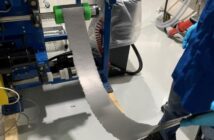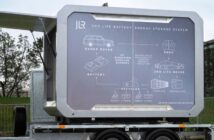A DC (Direct Current) Motor is an electric motor that supplies power to machines as it uses electrical energy to perform its main function.
The introduction of this motor in the 1870s paved the way for the second Industrial Revolution.
The primary principle that makes a DC motor work is based on how magnets react to each other: like magnetic poles repel and unlike magnetic poles attract. When you look at a DC motor, you will see a coil of wire (armature) and a horseshoe magnet (stator) as part of its basic components. Every time an electric current run through the coil, an electromagnetic field is generated and aligned to the center of the coil. As you switch the current on or off, the magnetic field is also turned on or off.

The process begins with an electric current – supplied by a battery or direct source. The current flows from the positive terminal and passes through a half circle commutator that is attached to each end of the coil of wire. The brushes on the commutator allow the current to run through the loop of copper wire between two magnetic poles. The brushes maintain the path of the current – going through the right and back to the left. The reversal of electric current every half rotation keeps the wire rotating in the same direction. Without this commutator, all you will ever get is a 180° turn. As the direction of the current is reversed, the magnetic field that is generated will cause the coil to make another 180° turn in the same direction to complete a full rotation.
Every time the electric current flows, a force will move the wire. On the south pole of the magnet, an upward force is generated that causes the wire to move up. On the north pole of the magnet, a downward force is generated that prompts the wire to move down. This causes the coil of wire to rotate on an axis or torque.
The speed of the DC motor can be controlled through the voltage that is applied to the armature. In most cases, the highest torque is often accomplished at low speed. This application is best for trams and other electric vehicles.
Related Articles:
The Davenport Motor: The First Patented Electric Motor



